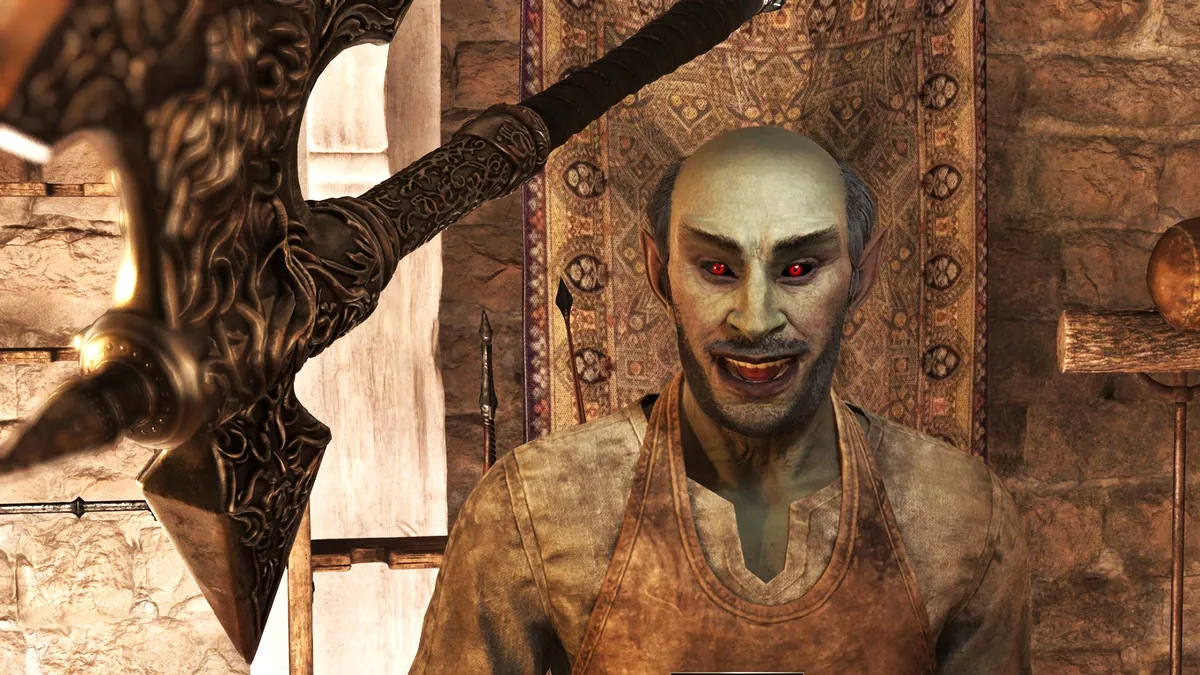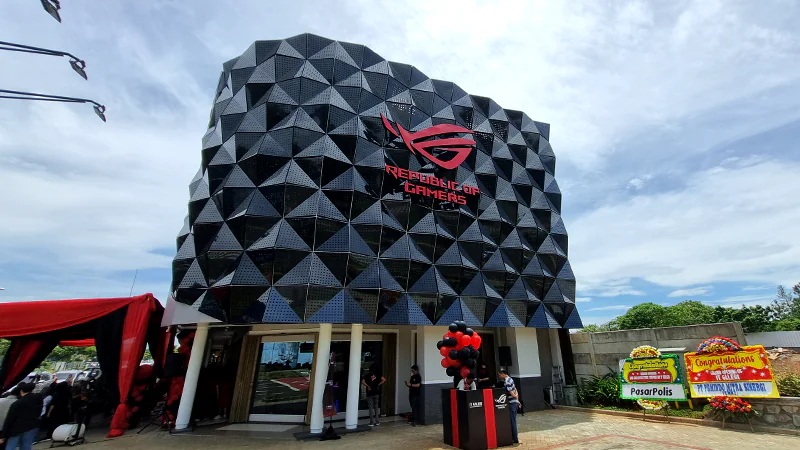For some, 1998 is just a number in a history book - an era of reform, monetary crisis and social turmoil that changed the face of a nation. But amidst the inflationary figures and gripping headlines, there were millions of personal stories about the struggle to make a living. Taking one of those millions of stories, GameChanger Studio invites us into a narrow toll booth in 1998: The Toll Keeper Story, A game that proves that the biggest dramas often happen in the most ordinary places.
Set in the fictional land of Janapa, the game invites players to experience the struggles of Dewi, an expectant mother who works as a toll gate guard. Although the world is fictitious, the story is strongly inspired by true stories of the era, where massive inflation spread to all aspects of life and triggered socio-political chaos.
Spoiler warning: This review will cover some story points and advanced mechanics of the game.
Two Main Pillars: Simulation and Narrative
As game narrative simulation choice matters, “1998: The Toll Keeper Story” is built on two main pillars that reinforce each other:
- Pillar Simulation: Players will experience the unique experience of being a toll guard in an era of crisis, with exciting and semi-realistic gameplay.
- Narrative Pillars: This game offers a very immersive story, with deep character development, storyline and an interesting background. In this game, all the choices the player makes will affect the ending of the story.

In this review, we take a deeper dive into how these two pillars work to tell Dewi's story of surviving the crisis.
The Goddess Story in 1998: The Toll Keeper Story
Dewi is a person who lives in simplicity, because from childhood she was raised that way by her parents. At school she had a best friend named Santi, a friendship that lasted until they were adults. In this simple life she met Heru, starting from exchanging views. From exchanging views but gradually they want to live together and make a happy family.
After they got married Dewi and Heru migrated to the capital city for a better life. Life in the city is not easy, Dewi ends up working as a toll gate guard while Heru works as a taxi driver.
The game begins as Dewi and her husband Heru are preparing to bring their baby girl into the world. In the midst of this old pregnancy, Dewi continues to work to make a living and prepare to give birth to her daughter. But fate said otherwise, their world began to be hit with various obstacles starting with the condition of Jenapa which was hit by an economic crisis that spread to all aspects.
While guarding the toll gate, Dewi still carries out her main duties and also gets other tasks that sometimes make players question morals. While working at the toll gate, Dewi often meets and talks to toll road users ranging from her husband Heru, her best friend Sinta to a student named Juki. Therefore, Dewi gets pieces of the story that happened in the capital city of Jenapa.

Day by day, Jenapa's condition worsened, people's unrest began to grow until finally students began to protest the government. With conditions like this, Dewi is increasingly risking many things to make a living from health to economy.
But it got even harder when she got the news that her baby was in a breech position. So Dewi had to raise more money for surgery caesar so that she and her baby survived. How will the story end for Dewi and her loved ones? Only the player can determine the ending from the small choices made during the game.
Toll gate guard simulation gameplay
The core of the game puts us inside the cramped cubicle of a tollbooth guard, and this is where the two pillars of gameplay-simulation and narrative-come together nicely.
Our main task is basically simple: check the type of vehicle passing by, determine the appropriate fare, accept the money, and give the right change. However, as the state of Janapa deteriorated, this once routine job became increasingly complicated and stressful.

Every few days, new regulations are implemented as a reflection of the deepening crisis. Not only do we have to be on the lookout for counterfeit money, but we are also tasked with enforcing new rules such as the odd-even license plate system to checking the weight of vehicles. These ever-increasing mechanics manage to keep the gameplay challenging and cleverly portray how messed up the country is from the perspective of an ordinary worker.
Amongst those technical tasks, the game's narrative shines. Each stopped car isn't just a number and a fare; they are our window to the outside world. Drivers often share stories, complain, or even ask for help. The choice to help a cash-strapped driver or not, no matter how small, will have consequences that spill over into Dewi's storyline and the fate of those around her. All these struggles feel real because behind the scenes, we have to manage Dewi's meager income to pay for rent, food and the looming doctor's fees.

In between stressful work shifts, Dewi's main story is told through effective visual novel segments. Each day closes with a reflective moment where we see the contents of Dewi's journal, which we can even decorate with stickers. This little mechanic cleverly makes us more attached and emotionally invested in her struggles, turning a work simulation into a touching human story.
Visuals and Sound
In terms of visuals, 1998: The Toll Keeper Story comes with a classic visual style to give it a 90s feel. This visual is presented through the visual hand drawn, use of dot textures, old paper aesthetics, and sepia filters. With this combination, it gives the impression of vintage old print media products that have limitations. As a form of visual vintage the use of animation in this game is fairly simple and stylish, using a style reminiscent of the stop motion.

In terms of audio, the music in 1998: The Toll Keeper Story is very much in keeping with the 90s. The music in the main menu gives a dark feel that tells us a bit about what's going to happen in the game. While playing, we were confused as to why there was no background music. It turns out that the background music has to be turned on manually by selecting the radio in the background.
When the background music is on, the feel of the game suddenly changes as the music is calm and danceable. We therefore feel that this is intentional by developer to give a sense of contrast to what was happening where the Goddess could momentarily take her mind off things.
On the other hand, we felt that when background music was playing, our focus was somewhat distracted and we made mistakes when checking the vehicle. So the option of being able to turn the music on and off is a nice touch to the quality of life from the developer. The quality of the sound effects in this game is very good and immersive especially the car part. Unfortunately, when there is a voice talent who is the voice of the Goddess, the recording quality is different from the other audio and causes a loss of immersion when listening to the story.

Conclusion
1998: The Toll Keeper Story is a must-enjoy game for the gamer a fan of narrative simulation games. As the first game from Indonesia, the theme of toll gate guards is very interesting, by inviting players to focus on checking vehicle details. Furthermore, the story of Dewi is very interesting because it was inspired by real-life events, especially the events in Indonesia at that time.
However, these positives can also be the reason some players are not suitable to play this game. Maybe for people who don't like repetition or who have a family story that parallels what Dewi experienced. Therefore, we think the story presented in this game is very heavy and needs to be pondered by the player.
Pros
- Eye-catching visuals give a sense of vintage.
- An immersive story that makes players want to know the rest of Dewi's story.
- Mechanic gameplay The variety invites players to focus while playing.
- The surroundings during immersive play follow the storyline.
- Value replayability high because this game has more than one ending.
Disadvantages
- Unfortunately, one storyline is fairly short because it only has 15 days.
- The storyline felt a bit rushed in the last few days.
- Inconsistent audio recording quality especially when using voice talent.
- There are mechanics that are difficult to access because they are in the menu while these mechanics are frequently used.
1998: The Toll Keeper Story
Summary
1998: The Toll Keeper Story is a narrative simulation game that manages to deliver an immersive experience. It does have some flaws though, gameplay The fun and engaging story makes it a must-play for lovers of narrative simulation games.






























